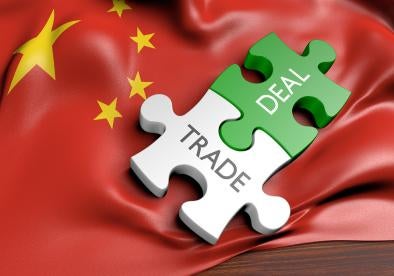The Office of the United States Trade Representative (USTR) on May 21, 2019, published a Federal Register notice that it seeks comments on new forms for parties to submit exclusion requests, in connection with the $200 billion “List 3” tariffs that USTR announced on September 21, 2018, initially at a 10 percent rate, and then increased to 25 percent in a May 9, 2019, USTR announcement. Although the USTR previously established procedures for obtaining exclusion requests from the “List 1” and “List 2” Section 301 tariffs, USTR previously had not established procedures for seeking exclusions from List 3 tariffs. The notice published on May 21, 2019, is USTR’s first step in establishing an exclusion process for List 3 tariffs. A copy of the USTR’s May 21, 2019, notice, along with a draft exclusion request form that USTR has sent to the Office of Management and Budget (OMB), can be found here.
- Whether the proposed exclusion request form is necessary for the proper performance of USTR’s functions, including whether the information will have practical utility.
- The accuracy of USTR’s estimate of the burden of the proposed exclusion request form, including the validity of the methodology and assumptions used.
- Ways to enhance the quality, utility, and clarity of the proposed exclusion request form.
- Ways to minimize the burden of the proposed exclusion request form on those who are to respond, including the use of appropriate automated, electronic, mechanical, or other technological collection techniques or other forms of information technology.
Please note that the form that USTR proposes for List 3 exclusion requests appears to require significantly more-detailed information than the exclusion requests for List 1 and List 2 require. In particular, these new exclusion request forms appear to require requestors to submit much more detailed descriptions than in the List 1 or List 2 exclusion rounds. In particular, note that item 3 in the proposed form states, “USTR will not consider requests in which more than one unique product is identified.”
We spoke with a USTR official about this issue, and we were told that, when the product description is being prepared, it should be as detailed as possible. USTR only wants to grant exclusions for narrowly defined products. We also asked whether we could use ranges. Essentially, the USTR official with whom we spoke stated that the important point is that it must be administrable for U.S. Customs and Border Protection. In other words, if, as an example, a diameter range of 10–20 mm is in one 10-digit Harmonized Tariff Schedule subcategory, but a diameter range of over 20 mm is in another, then the requestor should not submit a single product description with a range of 10 mm and above.
USTR has set a deadline of June 7, 2019, for parties to submit comments. The comments are to be directed to OMB, which is in charge of approving USTR’s information request forms.



 i
i


